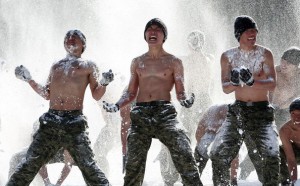Ninja Aruki Skill Building: 8 tips for Silent movement
Sunday, January 25th, 2015Hello Ninja fans!
One skill that attracted me to ninjutsu was the ninja’s ability to move silently through many areas. So, while I was practicing today I thought it would be a good to review a few tips on silent movement for you to incorporate into your practice.
- Take slow, measured breaths from the nose. In through the nose and out through the mouth, similar to the method utilized when you are practicing meditation.
- Look at where you will step next and be mindful of what you are stepping on!
- When you are outside, attempt to walk on bare dirt or live grass. Dead foliage creates a perceptible “crunch” even when lightly stepped on. If you encounter an area where forced to walk through foliage, then pick the clearest path and proceed slowly, possibly bending over and removing obstructions from the location of the next step.
- Place the heel or toes of your foot down first and roll your foot slowly and gently onto the ground. If moving swiftly, run/leap from location to location. Avoid landing flatfooted. For moving backwards, this is reversed, so that the ball of the foot is placed down first, and then the heel lowered to the ground.
- Move when there are sounds around you. The wind blowing, a plane overhead or even a car in the distance, utilize what you can to help camouflage the sounds of your movement.
- Practice stalking animals outside, this tip has helped me get very, very close to wildlife, and if you can do this you will be achieving a high level of movement.
- If you are getting really close to a target, walk on the outer edge of your feet, rolling your foot from heel to pinky toe. Though very silent, this technique is also uncomfortable and should only be used for short distances. The hips can be rotated slightly to make this technique easier.
- If you are trying to walk silently on gravel: Bend low at the knees. The first part of your foot to hit the ground should be the heel. “Roll” forward on that foot until you’re on the ball of your foot (the padded part just behind the toes). Just before you’ve rolled all the way onto the ball of your foot, put your other foot down, heel first, directly in front of the first foot, almost touching it. You should be able to smoothly roll from the first foot to the second. Continue by rolling on the second foot, until you’re almost at the ball, and repeat by putting the first foot in front of the second. This should all be done fluidly.
Bufu Ikkan
Airyu – “Living the Ninja Lifestyle”
ps: Battening down the hatches as the next serious snow storm is heading this way. It might be a great opportunity for some winter survival training with 2 feet of snow expected!

